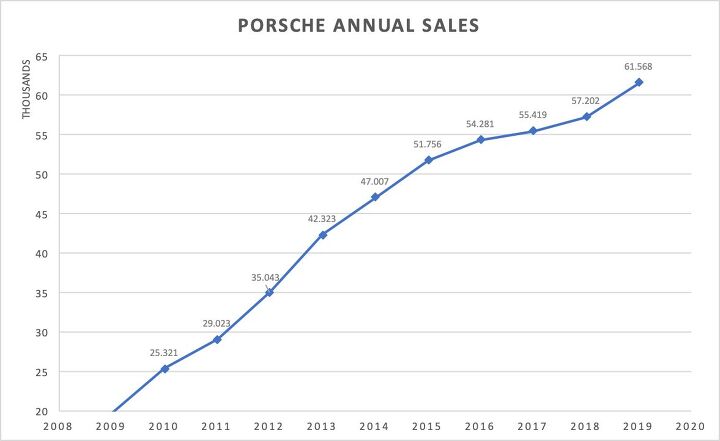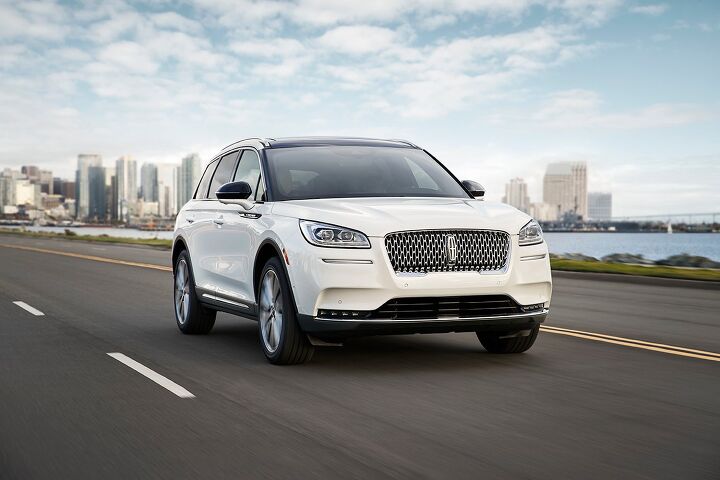Who's Buying New Cars? Well, the One-percenters, at Least

Rich people are just like us: they put on their pants one leg at a time, they walk upright, and they enjoy winters at their villa in the south of France. Okay, maybe they aren’t exactly like us. My villa is in Spain.
One other thing they do? Buy cars, apparently. A quick perusal of 2019 total year sales numbers show that while mainstream makes like Ford and Chevy fell into the red compared to the same timeframe one year ago, there’s no shortage of growth at the big money brands.
It helps to focus on volume in this instance rather than percentages, though we will list both, as a smaller sample size can create disproportionate numbers. Failure to do so would result in breathless headlines proclaiming McLaren sales have jumped by two-thirds versus the previous calendar year.
That is a real number, though. In 2018, the supercar brand sold approximately 1,368 cars in the United States. Last year? Try an estimated 2,286. This is a huge jump, not all of which can be attributed to new product. Arranging its offerings into Sports, Super, and Ultimate Series models has had the effect of cataloging the McMenu into an easier to decipher lineup. Obsessed gearheads like us know the difference between a 570S and a 675LT, but never underestimate the need to explain stuff to rich people.
Porsche is in the same boat, adding about 4,000 units to its annual sales volume last year. This represents a roughly 8 percent increase and marks the first time the brand has crested 60k. That number about triple its total of just 10 years ago in the Bad Old Days of 2009.
Slightly out of the stratosphere, der German trio of Audi, BMW, and Merc didn’t lose any ground in 2019, either. The bookends there were up about a percentage point, while the blue-and-while propeller rose 4.4 percent in terms of volume to 324,826 vehicles. That’s within spitting distance of mainstream brands like VW, for example.
Speaking of, the two snazzy Detroit brands also enjoyed an increase last year. Cadillac added 1,544 vehicles to its bottom line, ending up at 156,246 units. Its cross-town rivals at Lincoln found 8,617 new customers, settling at 112,204. The latter can look at a portfolio of new and well received product as reward for that solid sales performance. Your author would like to think that a return to real names helped as well; compare a lineup of MKC, MKX, and MKT to a roster including Corsair, Nautilus, and Aviator. It’s tremendous.
Can this continue? A few economic talking heads seem to think so. Goldman Sachs is yammering that the U.S. economy is “structurally less recession-prone today”, stopping just short of saying its recession-proof. Some of the major recession headwinds have dissipated, they say, which can only be good news for people who buy McLarens and Audis. I’m not sure these declarations are as impactful on the lives of everyone else, though.
In our year-end round up, we asked if you or anyone in your circle drove home new wheels in 2019. Thanks for your answers. We’ll re-up today but with a twist: did a member of yer crew sign on the line that is dotted for any of the brands listed in this post? Let us know below.
[Images: Porsche, Lincoln Motor Company]

Matthew buys, sells, fixes, & races cars. As a human index of auto & auction knowledge, he is fond of making money and offering loud opinions.
More by Matthew Guy
Latest Car Reviews
Read moreLatest Product Reviews
Read moreRecent Comments
- Wolfwagen How about some standardization of wiper controls? I have 5 different cars in my family's fleet and have driven a ton of rentals for work. Holy F*cking Sh*t Balls! Left side, right side, push the lever up to turn on, push the lever down to turn on, push the lever forward to turn on, pull the lever back to turn, slide indicator to the left to decrease intermittent wipe time, slide indicator to the right to decrease intermittent wiper time.
- Redapple2 Someone else said it. Looks like a 4/5 size ford edge (front and back)
- Rochester Tim, where was your head at in 1984 when it became a law to wear your seatbelt? Personally I thought it was none of the Gubmint's bizniss to force me to belt up. Today, I feel exposed and unsafe without it. My point is, give it time, both the tech and your values will evolve.
- Theflyersfan After looking it over, Honda, I want royalties for this one: The Honda Yawn.
- V8fairy Not scared, but I would be reluctant to put my trust in it. The technology is just not quite there yet



































Comments
Join the conversation
I've actually come around to the notion that more people should consider buying new. It feels like the 2-3 year old proverbial used car is very expensive these days, and so most people are likely to still have a significant loan, and yet won't have much warranty period left and the vehicle will start to need maintenance and such while you're still in the middle of paying it off. Colleague of mine had the engine blow on his daily driver after 20 years and 300,000 miles of ownership. Went out and bought a 2 year old Santa Fe with 30k miles for $20,000. Local dealership had dozens of brand new Santa Fe's advertised for $25,000. I know better than to say anything, but I know what I would have done. Over a 60 month loan at 4.77%, that's less than a $100 difference, and this guy has great credit and a good job.
Agree as well much easier with good credit to finance a new vehicle and for just 5k more have a new vehicle instead of a 2 year old vehicle this is especially true of many Toyotas and Hondas where for a couple of grand more you can buy new and get a full warranty.